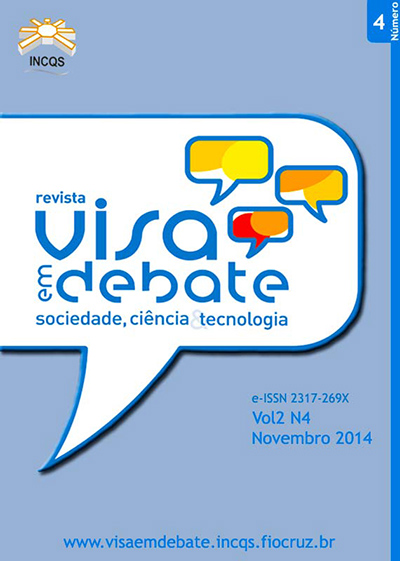Efeito do processamento industrial e doméstico de alimentos nos níveis de resíduos de agrotóxicos
DOI:
https://doi.org/10.3395/vd.v2n4.462Palavras-chave:
Alimentos Processados, Resíduos de Agrotóxicos, Segurança AlimentarResumo
Resíduos de agrotóxicos em alimentos representam um grande risco para a saúde pública, devido aos efeitos nocivos que podem causar. Devido à utilização de agrotóxicos na produção de alimentos, bem como por meio de contaminação ambiental, os resíduos podem ser encontrados em alimentos frescos, cozidos e processados. A maioria dos alimentos é consumida após o processamento industrial ou doméstico, como a lavagem, remoção da casca, tratamentos térmicos ou esterilização. Vários estudos têm mostrado que estes processos podem, em alguns casos, reduzir os níveis de resíduos. A eficiência de remoção de resíduos depende do processamento envolvido e das propriedades físico-químicas dos agrotóxicos, tais como estabilidade e interação com o alimento. Esta revisão tem como objetivo destacar os resultados de estudos dos efeitos de diversos processos sobre os níveis de resíduos de agrotóxicos em diferentes alimentos, especialmente a eficiência de remoção dos compostos. Esta informação é útil para avaliar a possibilidade de minimizar o risco de exposição do consumidor aos resíduos de agrotóxicos nos alimentos, tornando-se uma importante ferramenta para a segurança alimentar.Downloads
Downloads
Publicado
Edição
Seção
Licença
Copyright (c) 2014 Vigilância Sanitária em Debate: Sociedade, Ciência & Tecnologia (Health Surveillance under Debate: Society, Science & Technology) – Visa em Debate

Este trabalho está licenciado sob uma licença Creative Commons Attribution-NonCommercial-NoDerivatives 4.0 International License.
TERMO DE CESSÃO DE DIREITOS AUTORAIS O(s) autor(es) doravante designado(s) CEDENTE, por meio desta, cede e transfere, de forma gratuita, a propriedade dos direitos autorais relativos à OBRA à REVISTA Vigilância Sanitária em Debate: Sociedade, Ciência & Tecnologia (Health Surveillance under Debate: Society, Science & Technology) – Visa em Debate e, representada por FUNDAÇÃO OSWALDO CRUZ, estabelecida na Av. Brasil, nº 4365, Manguinhos, Rio de Janeiro, RJ, Brasil, CEP 21045-900, doravante designada CESSIONÁRIA, nas condições descritas a seguir: 1. O CEDENTE declara que é (são) autor(es) e titular(es) da propriedade dos direitos autorais da OBRA submetida. 2. O CEDENTE declara que a OBRA não infringe direitos autorais e/ou outros direitos de propriedade de terceiros, que a divulgação de imagens (caso as mesmas existam) foi autorizada e que assume integral responsabilidade moral e/ou patrimonial, pelo seu conteúdo, perante terceiros. 3. O CEDENTE cede e transfere todos os direitos autorais relativos à OBRA à CESSIONÁRIA, especialmente os direitos de edição, de publicação, de tradução para outro idioma e de reprodução por qualquer processo ou técnica. A CESSIONÁRIA passa a ser proprietária exclusiva dos direitos referentes à OBRA, sendo vedada qualquer reprodução, total ou parcial, em qualquer outro meio de divulgação, impresso ou eletrônico, sem que haja prévia autorização escrita por parte da CESSIONÁRIA. 4. A cessão é gratuita e, portanto, não haverá qualquer tipo de remuneração pela utilização da OBRA pela CESSIONÁRIA.






